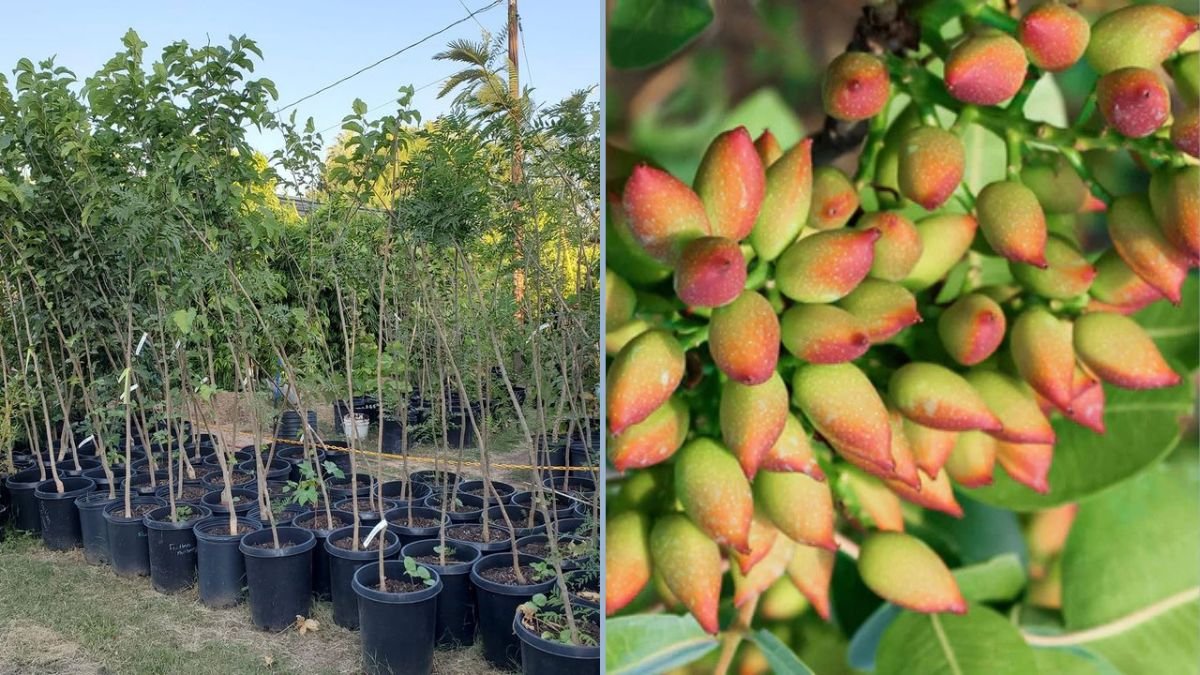Pistachio trees are prized for their delicious nuts, attractive evergreen foliage, and drought-tolerant nature. While commercial cultivation typically relies on grafted trees, growing pistachios from fruits (seeds) at home is possible and can be highly rewarding. With the right methods, care, and patience, you can propagate your own pistachio trees and enjoy homegrown nuts. This guide provides a step-by-step approach to ensure successful germination, growth, and establishment, making your pistachio-growing project virtually foolproof.
Why Grow Pistachio Trees from Fruits?
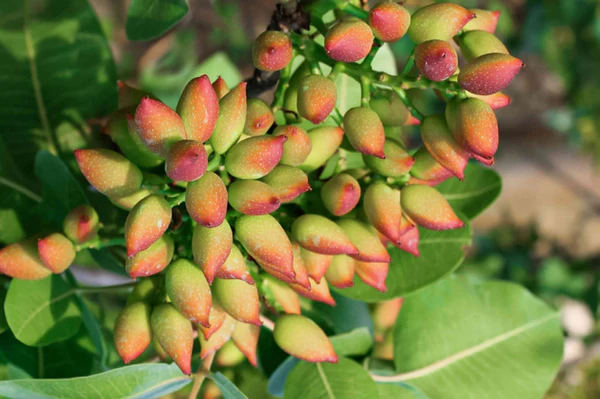
Growing pistachios from fruits or seeds offers several benefits:
- Cost-effective: Seeds are inexpensive compared to buying mature saplings.
- Sustainable gardening: Seed propagation promotes self-sufficiency and reduces reliance on nurseries.
- Learning experience: Watching a tree grow from seed provides insight into horticulture and plant biology.
- Customization: Seed-grown trees adapt to your local soil and climate conditions.
- Homegrown nuts: Enjoy fresh pistachios free from chemicals or preservatives.
While pistachio trees grown from seeds take longer to produce nuts compared to grafted trees, careful attention and patience can lead to healthy, productive trees.
Step 1: Selecting Healthy Pistachio Fruits
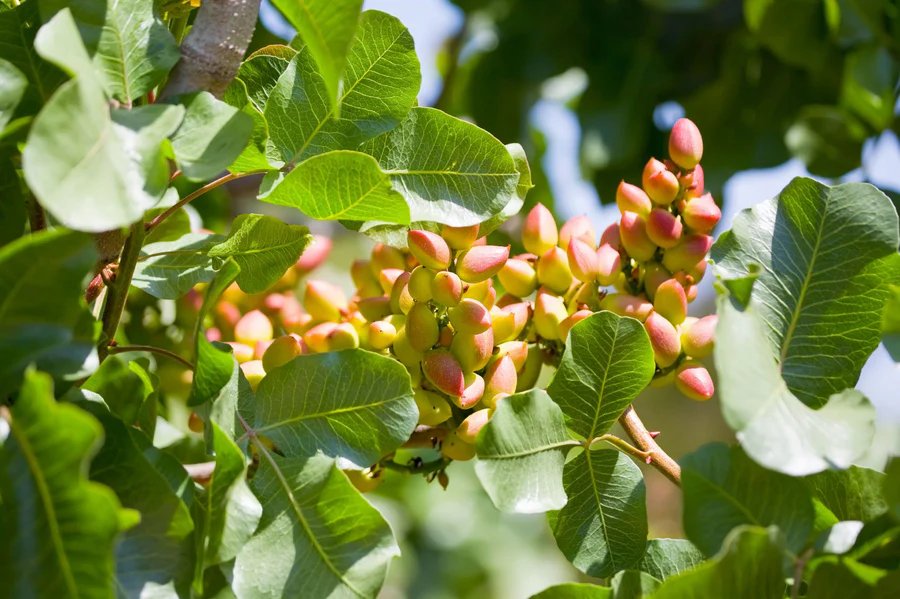
The first step in successful propagation is choosing the right fruits:
- Mature fruits: Select fully ripe pistachios. The shells should be hard and the nut fully developed.
- Intact seeds: Avoid cracked, damaged, or moldy nuts.
- Freshness: Fresh pistachios have higher germination rates. If storing, keep them in a cool, dry place until planting.
Healthy seeds form the foundation for strong seedlings and long-term tree health.
Step 2: Preparing Pistachio Seeds
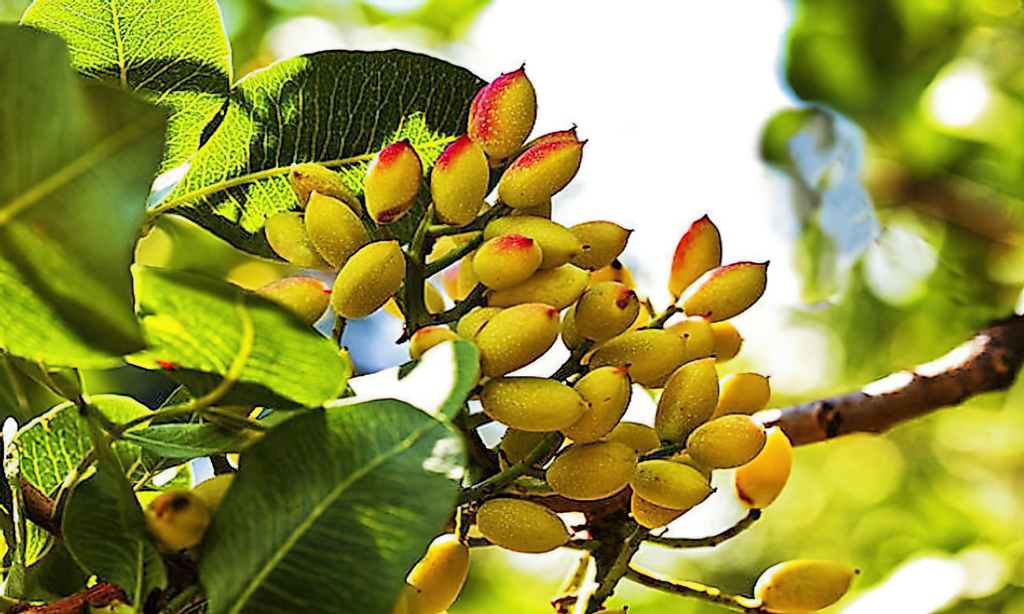
Pistachio seeds have a hard shell that protects the embryo. Proper preparation improves germination rates.
Steps for Seed Preparation
- Soak seeds: Immerse pistachios in water for 24–48 hours to soften the hard shell.
- Husk removal: If the outer husk is still attached, peel it carefully to expose the inner nut.
- Check viability: Healthy seeds sink in water, while damaged ones float. Discard floating seeds.
- Scarification (optional): Lightly sand the shell surface to enhance water absorption and speed up germination.
Seed preparation is critical for consistent and successful sprouting.
Step 3: Stratification (Cold Treatment)
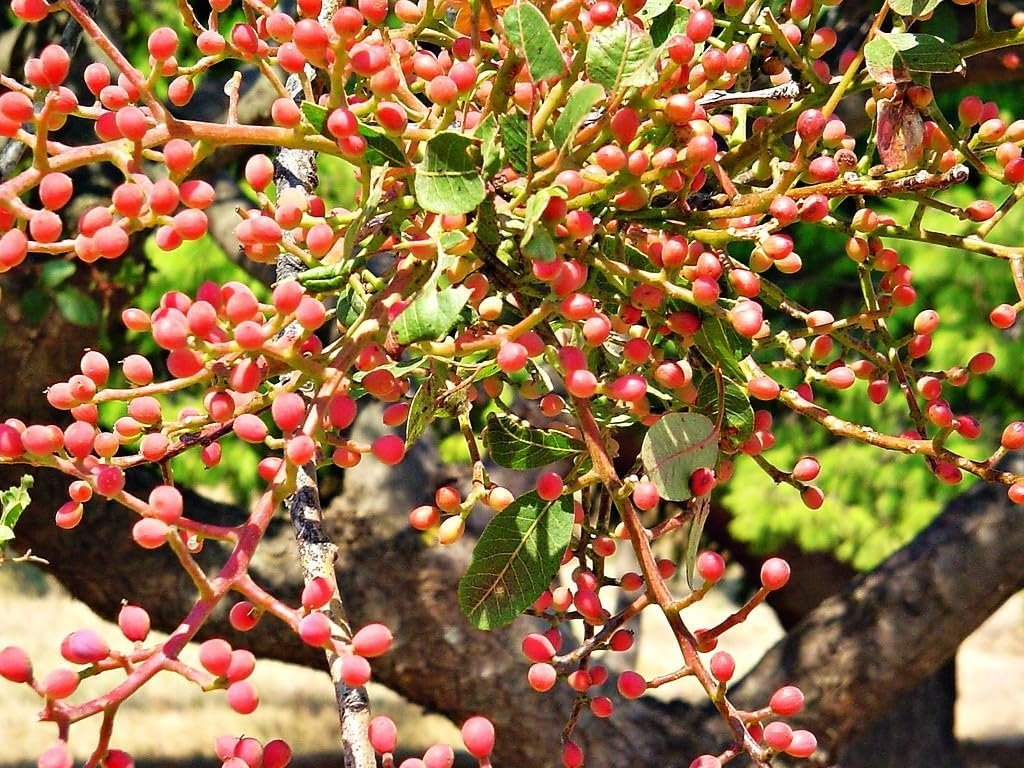
Pistachio seeds benefit from cold stratification to break dormancy and promote germination:
- Place the seeds in a damp medium such as sand, peat moss, or vermiculite.
- Put the seeds in a sealed plastic bag or container.
- Store them in the refrigerator at 2–4°C (36–40°F) for 6–8 weeks.
- Check periodically to ensure the medium remains damp but not soggy, preventing mold growth.
Stratification mimics winter conditions, signaling the seed that it is safe to germinate when temperatures rise.
Step 4: Planting Pistachio Seeds
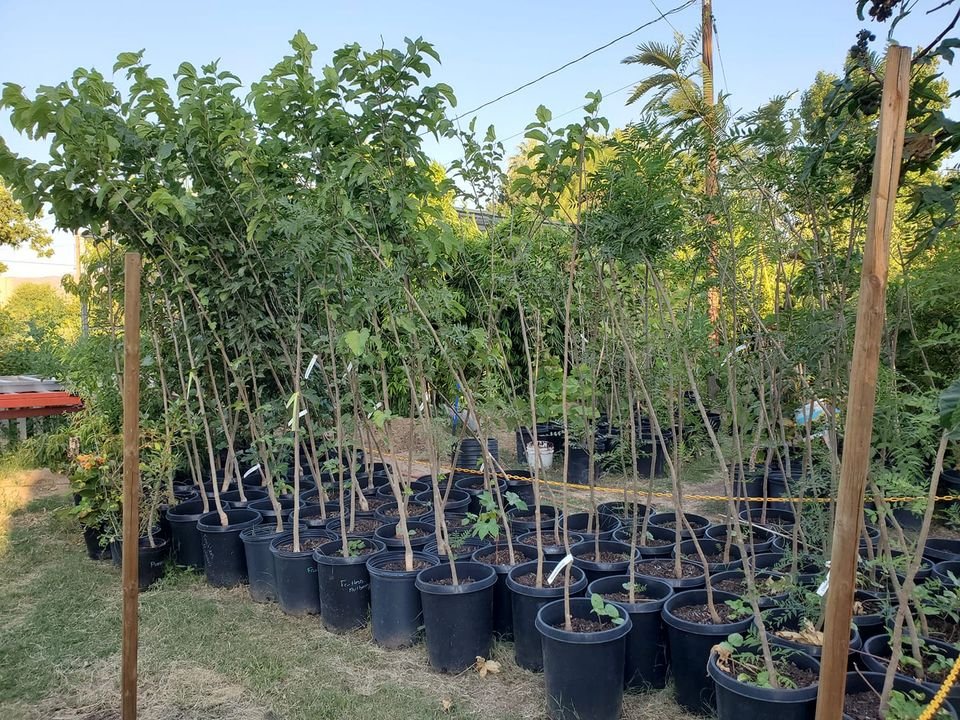
Once stratified, pistachio seeds are ready for planting:
Materials Needed
- Seed trays or small pots with drainage holes
- Well-draining potting soil
- Watering can or spray bottle
Planting Steps
- Fill pots with a well-draining soil mix (equal parts garden soil, sand, and compost).
- Plant each seed 1–2 inches deep with the pointed end facing downward.
- Cover lightly with soil and water gently.
- Place pots in a warm, bright area with indirect sunlight.
- Maintain consistent soil moisture while avoiding waterlogging.
Germination Timeline
- Pistachio seeds typically germinate within 3–6 weeks.
- Some seeds may take longer depending on freshness, soil conditions, and temperature.
- Be patient, as uniform germination may vary.
Step 5: Caring for Pistachio Seedlings
Proper care during the early growth stages is essential for robust trees:
Watering
- Keep the soil consistently moist, especially during the first few weeks.
- Avoid overwatering, which can lead to root rot.
- Deep watering encourages strong root development.
Sunlight
- Seedlings require at least 6 hours of sunlight daily.
- Gradually introduce them to direct sunlight to strengthen stems and leaves.
Fertilization
- Apply a balanced, slow-release organic fertilizer once seedlings have true leaves.
- Compost or diluted liquid fertilizers every 2–3 weeks promote healthy growth.
Pruning
- Remove weak or damaged shoots to encourage a strong central stem.
- Early pruning establishes good structure and prepares trees for future fruiting.
Pest and Disease Management
- Monitor for aphids, mites, or fungal diseases.
- Apply organic solutions such as neem oil or horticultural soap if needed.
- Ensure proper airflow and avoid overcrowding to minimize disease risks.
Step 6: Transplanting Seedlings
When seedlings reach 6–12 inches in height, they can be transplanted into larger pots or directly into the garden:
Transplanting Steps
- Choose a location: Pistachio trees thrive in full sun with well-draining soil.
- Prepare the planting hole: Dig a hole twice as wide as the root ball and slightly deeper than the seedling’s current root depth.
- Amend soil: Mix the garden soil with compost or sand to enhance fertility and drainage.
- Transplant carefully: Remove seedlings gently, keeping soil around roots intact.
- Plant at the same depth: Place seedlings at the same depth as in the pot, backfill soil, and water thoroughly.
- Mulch: Apply a 2–3 inch layer of organic mulch around the base to retain moisture and reduce weeds.
Proper transplanting minimizes shock and ensures healthy establishment.
Step 7: Long-Term Care of Pistachio Trees
Pistachio trees are drought-tolerant and long-lived but require ongoing care to thrive:
Watering
- Water deeply during dry periods to encourage strong root systems.
- Mature trees are drought-tolerant but benefit from occasional irrigation, especially in their first few years.
Fertilization
- Apply compost or slow-release fertilizers seasonally to maintain soil fertility.
- Monitor leaves for nutrient deficiencies, indicated by yellowing or stunted growth.
Pruning
- Remove dead, damaged, or crossing branches to maintain structure.
- Shape the canopy to improve sunlight penetration and airflow.
Pest and Disease Management
- Watch for aphids, scale insects, and fungal infections.
- Use organic treatments and maintain proper spacing to reduce pest and disease problems.
Step 8: Flowering and Pollination
Pistachio trees are dioecious, meaning male and female flowers grow on separate trees:
- Male trees: Produce pollen, usually in early spring.
- Female trees: Develop pistachio nuts after successful pollination.
- Pollination: Wind is the primary pollinator; plant multiple trees to ensure nut set.
Proper pollination is critical for a successful nut harvest.
Step 9: Harvesting Pistachios
Pistachio trees grown from seeds may take 5–8 years to produce a significant crop:
- Signs of maturity: Nuts split naturally when ready for harvest.
- Collection: Pick nuts promptly to prevent pest damage or spoilage.
- Processing: Dry the nuts in a ventilated area, remove the outer shell if needed, and store in cool, dry conditions.
- Storage: Shelled pistachios can be stored in airtight containers for months.
Consistent care ensures maximum yield and quality of nuts.
Tips for Growing Pistachio Trees from Fruits
- Use fresh, viable seeds for the highest success rate.
- Apply cold stratification to break dormancy.
- Provide well-draining, nutrient-rich soil for seedlings.
- Maintain consistent moisture without overwatering.
- Ensure adequate sunlight for strong growth and flowering.
- Fertilize regularly with organic or slow-release fertilizers.
- Prune early to establish strong structure.
- Be patient—seed-grown pistachio trees take several years to produce nuts but offer a lifetime of harvest.
Conclusion
Growing pistachio trees from fruits is a highly rewarding gardening endeavor. By selecting healthy seeds, properly preparing them, stratifying, germinating, and providing consistent care, gardeners can achieve nearly 100% success in propagation. While seed-grown pistachios take several years to bear nuts, the satisfaction of nurturing a tree from seed to maturity is unparalleled.
With patience, dedication, and attention to detail, your homegrown pistachio trees will provide not only a beautiful addition to your garden but also a sustainable source of nutritious, flavorful nuts for years to come. By following this guide, even beginners can achieve successful propagation and enjoy the full rewards of growing pistachios from fruits at home.
